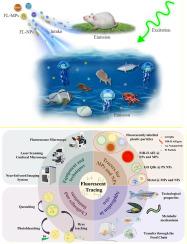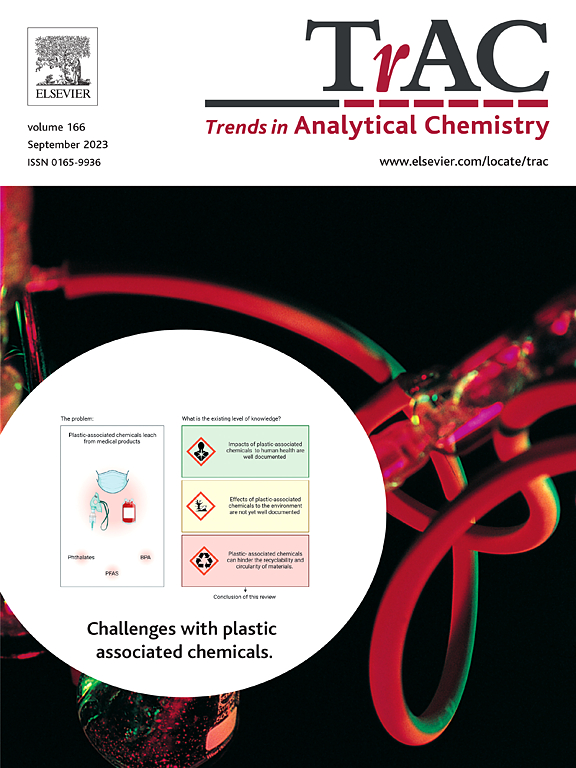Application of fluorescent tracing technology for investigating the effect of microplastics and nanoplastics on biological organisms
IF 11.8
1区 化学
Q1 CHEMISTRY, ANALYTICAL
引用次数: 0
Abstract
As the plastic industry rapidly develops, the resultant pollution from microplastics (MPs) and nanoplastics (NPs) has become widespread, significantly affecting human health and the ecological environment by their transmission and enrichment in the food chain. This article reviews an effective technique used for analysing the toxicological and metabolic mechanisms of MPs and NPs within organisms, namely the fluorescent tracing technology. This technology facilitates the qualitative and quantitative detection of MPs and NPs within organisms, enabling the monitoring of the behaviour and effect of MPs and NPs within biological systems. The paper explores the principles, advantages and disadvantages of various currently employed fluorescent tracers; summarises the equipment and technology currently utilised for MPs and NPs detection and tracing within organisms and discusses the application of the technology in studying MPs and NPs effects on organisms. Finally, it prospects the application prospect of in vivo fluorescence tracer technology for the detection of MPs and NPs, and points out the limitations and development directions of this method in subsequent research.

应用荧光追踪技术研究微塑料和纳米塑料对生物有机体的影响
随着塑料工业的迅速发展,微塑料(MPs)和纳米塑料(NPs)造成的污染已变得十分普遍,它们在食物链中的传播和富集严重影响着人类健康和生态环境。本文介绍了一种用于分析生物体内 MPs 和 NPs 毒性和代谢机制的有效技术,即荧光示踪技术。该技术有助于定性和定量检测生物体内的 MPs 和 NPs,从而监测 MPs 和 NPs 在生物系统中的行为和影响。本文探讨了目前使用的各种荧光示踪剂的原理和优缺点,总结了目前用于生物体内 MPs 和 NPs 检测和示踪的设备和技术,并讨论了该技术在研究 MPs 和 NPs 对生物体影响方面的应用。最后,展望了体内荧光示踪技术在 MPs 和 NPs 检测中的应用前景,并指出了该方法在后续研究中的局限性和发展方向。
本文章由计算机程序翻译,如有差异,请以英文原文为准。
求助全文
约1分钟内获得全文
求助全文
来源期刊

Trends in Analytical Chemistry
化学-分析化学
CiteScore
20.00
自引率
4.60%
发文量
257
审稿时长
3.4 months
期刊介绍:
TrAC publishes succinct and critical overviews of recent advancements in analytical chemistry, designed to assist analytical chemists and other users of analytical techniques. These reviews offer excellent, up-to-date, and timely coverage of various topics within analytical chemistry. Encompassing areas such as analytical instrumentation, biomedical analysis, biomolecular analysis, biosensors, chemical analysis, chemometrics, clinical chemistry, drug discovery, environmental analysis and monitoring, food analysis, forensic science, laboratory automation, materials science, metabolomics, pesticide-residue analysis, pharmaceutical analysis, proteomics, surface science, and water analysis and monitoring, these critical reviews provide comprehensive insights for practitioners in the field.
 求助内容:
求助内容: 应助结果提醒方式:
应助结果提醒方式:


